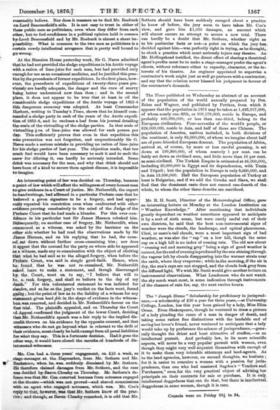Mr. R. H. Scott, Director of the Meteorological Office, gave
an interesting lecture on Monday at the London Institution on "Weather Knowledge." After mentioning that individuals greatly dependent on weather sometimes appeared to anticipate it by a sort of sixth sense, but were rarely useful out of their own districts, he said that the best non-instrumental signs of weather were the clouds, the landscape, and optical phenomena. Cirri, or mare's-tail clouds, were a most important sign of bad weather, as was also the " cap " on a low bill, though the same cap on a high hill is no index of coming rain. The old saw about "evening red and morning grey" being a sign of good weather is correct, for the red of evening is produced by the sun shining through the vapour left by clouds disappearing into the warmer strata near the earth, where they evaporate; while in the morning, if the air is dry, the sun's rays are not stopped, and the clouds look grey from the diffused light. We wish Mr. Scott would give another lecture on instrumental observations. What Londoners who do not watch the sky much want most, is some indication through instruments of the chances of rain for, say, the next twelve hours.


































 Previous page
Previous page